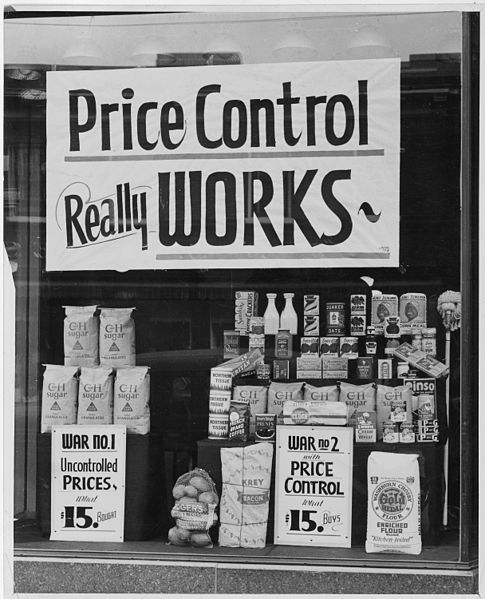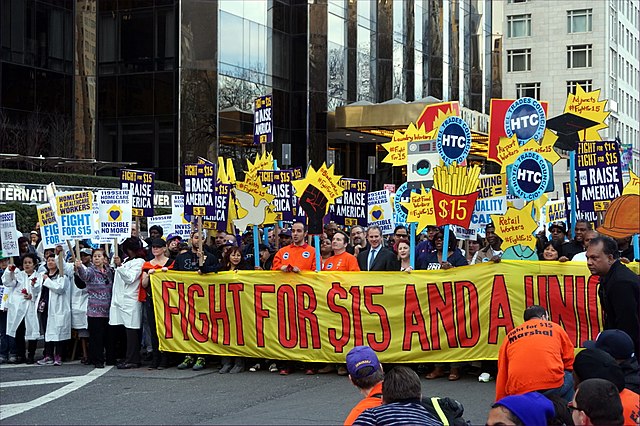Price controls are restrictions set in place and enforced by governments, on the prices that can be charged for goods and services in a market. The intent behind implementing such controls can stem from the desire to maintain affordability of goods even during shortages, and to slow inflation, or, alternatively, to ensure a minimum income for providers of certain goods or to try to achieve a living wage. There are two primary forms of price control: a price ceiling, the maximum price that can be charged; and a price floor, the minimum price that can be charged. A well-known example of a price ceiling is rent control, which limits the increases that a landlord is permitted by government to charge for rent. A widely used price floor is minimum wage. Historically, price controls have often been imposed as part of a larger incomes policy package also employing wage controls and other regulatory elements.
The maximum retail price (MRP) of this bottle of water in Sri Lanka is 90 Rupees
A World War II-era shop display promoting price controls.
Protesters call for an increased legal minimum wage as part of the "Fight for $15" effort to require a $15 per hour minimum wage in 2015. A government-set minimum wage is a price floor on the price of labour.
World War II poster about US price controls
A price ceiling is a government- or group-imposed price control, or limit, on how high a price is charged for a product, commodity, or service. Governments use price ceilings to protect consumers from conditions that could make commodities prohibitively expensive. Such conditions can occur during periods of high inflation, in the event of an investment bubble, or in the event of monopoly ownership of a product, all of which can cause problems if imposed for a long period without controlled rationing, leading to shortages. Further problems can occur if a government sets unrealistic price ceilings, causing business failures, stock crashes, or even economic crises. On the other hand, price ceilings give a government to the power to prevent corporations from price gouging or otherwise setting prices that create negative outcomes for the government's society.
"Pay no more than Ceiling Price," US poster during World War II
"New ceiling price lists are here," US Office of Price Administration during World War II






